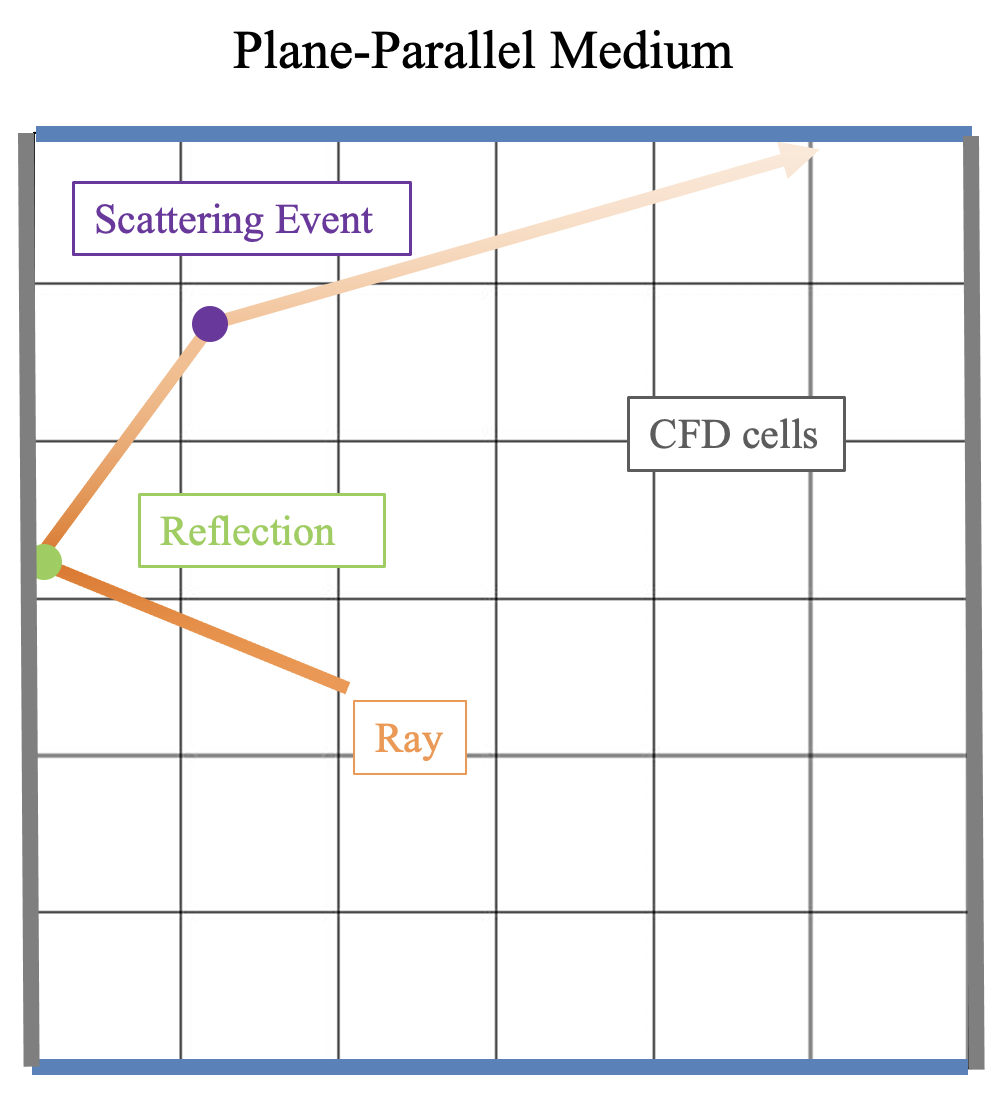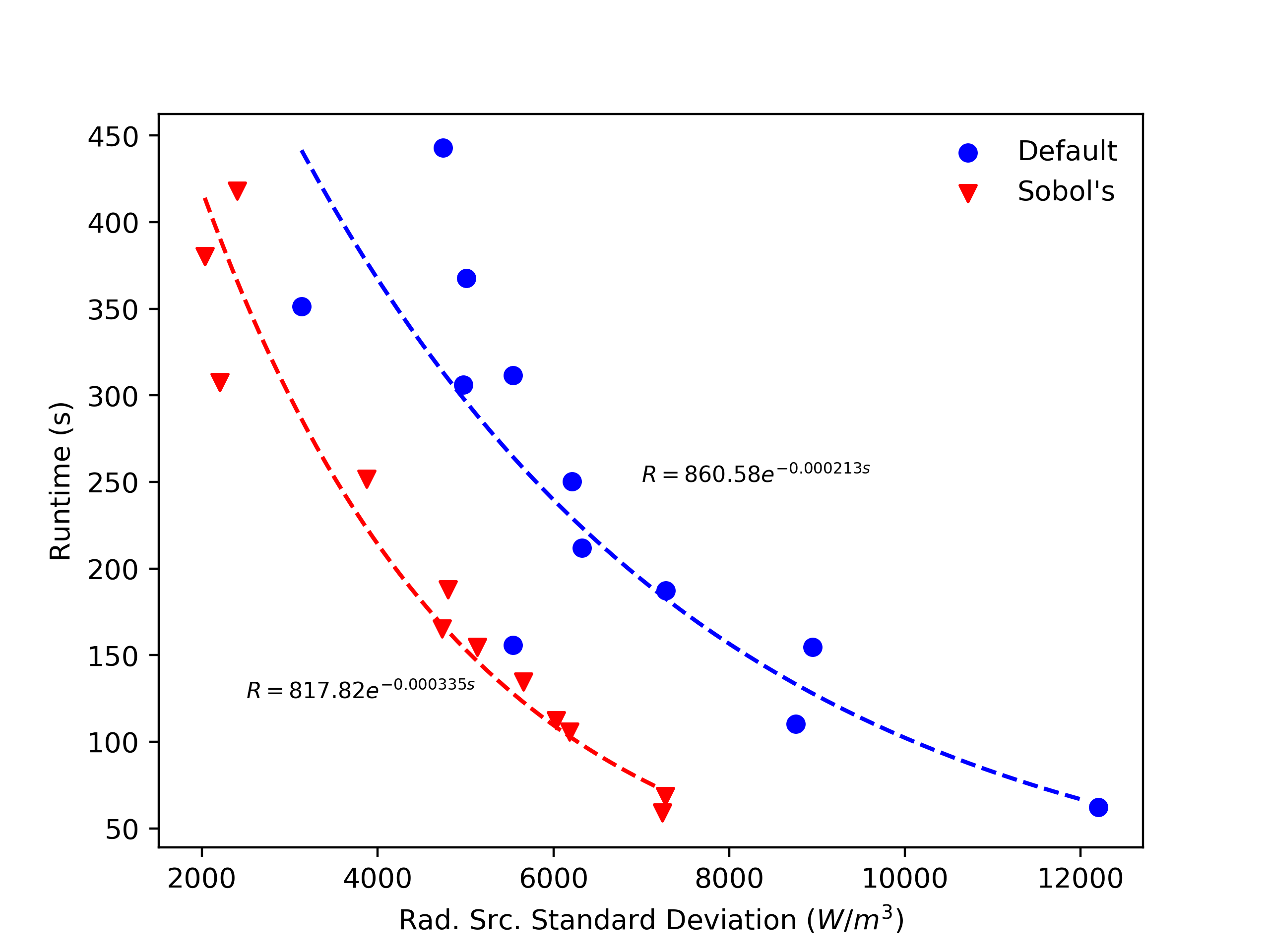
Figure 1

Figure 2

Team 66
Team Members |
Faculty Advisor |
Nicolas Tricard |
Xinyu Zhao Sponsor Acc Masters |
sponsored by

Modeling thermal radiation in combustion applications can be computationally challenging both in terms of runtime and accuracy. As a result, combustion researchers and engineers often do not have the ability to account for accurate radiative heat transfer in most practical combustion applications. Currently, the Monte-Carlo method is the most accurate method of modeling thermal radiation. In this method, a large number of rays are generated and traced through the CFD domain, transferring energy between locations. Each ray uses random numbers to generate its direction, location of emission and wavelength. Provided these attributes, the ray can be appropriately traced until full absorption. Two methods are introduced in this project to improve the ray tracing process. The first being a low-discrepancy sequence (LDS) random number generator, and the second being a new ray tracing algorithm. The LDS random number generator was proven to allow for faster convergence, hence reducing computational time. While the new ray tracing algorithm routine showed promising results by allowing for up to 66% faster computation and 10% less memory usage.
